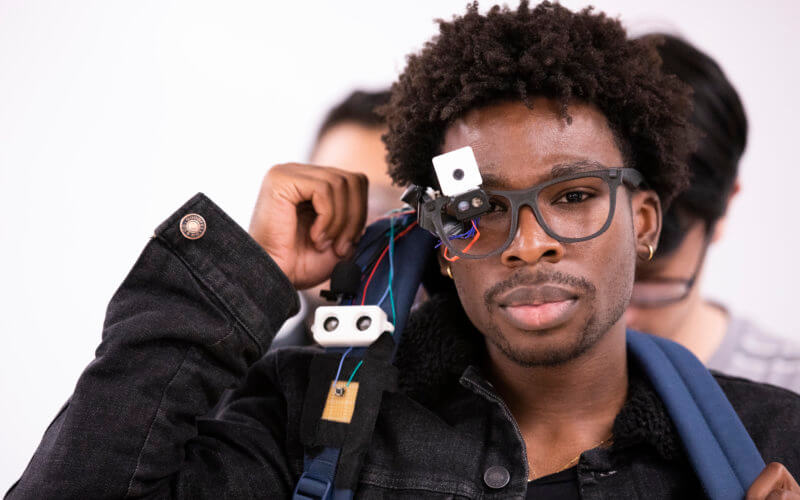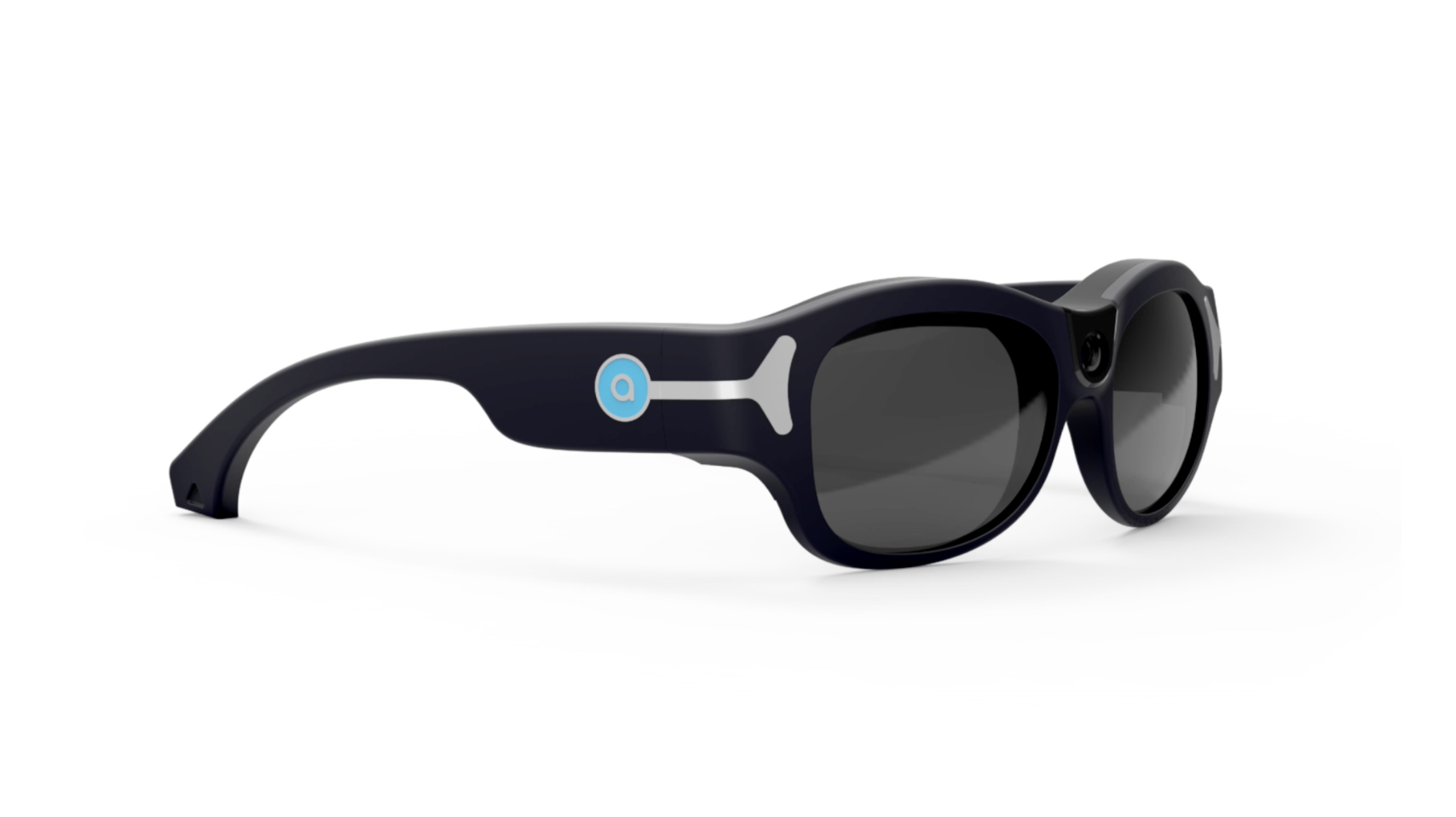Empowering Self-reliance With Assistive Modern Technology for the Blind
The integration of assistive innovation for individuals who are blind or aesthetically impaired represents a considerable development in cultivating self-reliance and boosting top quality of life. With a variety of gadgets-- from display visitors to cutting-edge responsive devices-- these innovations not only promote navigation and communication yet also advertise social inclusion and involvement in various facets of life.
Recognizing Assistive Innovation
Although assistive technology has actually developed dramatically over the years, its fundamental function remains the same: to boost the lifestyle for individuals with disabilities, specifically those that are visually damaged or blind. This innovation includes a wide range of devices and tools that help with freedom and functionality in everyday activities.
Assistive innovation can be classified right into modern and low-tech remedies, each designed to fulfill details requirements. Sophisticated gadgets usually include software applications, specialized equipment, and adaptive devices that make use of innovative technology to supply support in numerous contexts. Alternatively, low-tech options might involve daily items that are customized to boost availability, such as magnifiers or tactile markers.
The combination of assistive innovation right into the lives of individuals who are blind or aesthetically impaired not just advertises autonomy yet also promotes social incorporation and involvement in expert and academic atmospheres. By leveraging these technologies, customers can navigate their surroundings, accessibility details, and communicate effectively, thereby improving their overall lifestyle. Recognizing assistive modern technology is critical for specialists, advocates, and caregivers who aim to support individuals in optimizing their possible and achieving greater self-reliance.
Kinds Of Assistive Instruments
Assistive devices for the visually damaged and blind are necessary devices that boost daily obeying dealing with specific obstacles come across by users. These devices can be extensively classified into three main types: optical gadgets, digital devices, and sensory tools.

Sensory gadgets, such as Braille displays and tactile maps, give different ways to obtain details. Braille presents convert digital message into Braille, enabling customers to go through touch. Responsive maps provide spatial understanding via raised structures and lines, enabling much better environmental awareness.
With each other, these assistive gadgets equip individuals with visual impairments to engage even more totally with their environments, advertising better self-reliance and self-confidence in day-to-day tasks.

Effect On Life
The combination of assistive innovation right into the every day lives of individuals that are visually damaged or blind substantially boosts their capability to navigate and connect with the globe around them. Gadgets such as display readers, Braille presents, and mobile applications assist in access to details, enabling customers to involve with digital web content, interact effectively, and manage everyday jobs separately.
Additionally, modern technologies like wise glasses and navigating apps supply real-time help in unknown environments, enhancing movement and self-confidence. These devices make it possible for users to recognize challenges, reviewed indications, and also acknowledge faces, hence fostering a sense of freedom in public rooms. Furthermore, home automation systems, which can be regulated through voice commands, enable individuals to manage their living environments extra successfully, improving comfort and safety.
The effect of assistive technology expands beyond functional jobs; it advertises social addition and psychological wellness. By linking the gap in between individuals and their surroundings, these technologies empower users to participate totally in neighborhood activities, seek academic opportunities, and involve in significant relationships. Eventually, the development of assistive technology is crucial in redefining the possibilities for people that are visually impaired or blind, resulting in a more obtainable and inclusive society.
Success Stories and Endorsements

One more effective testimony originates from Mark, a current college Home Page graduate that used screen analysis software program throughout his academic journey. This modern technology allowed him to accessibility program products and join conversations, eventually bring about his successful change into the workforce. Mark credits assistive technology for empowering him to accomplish his job objectives, stressing its function in leveling the playing field for people with aesthetic problems.
In addition, neighborhood centers have actually reported boosted participation in their programs thanks to the introduction of obtainable digital platforms. These systems have made it simpler for people to attach, share resources, and support each other. These success tales collectively highlight the extensive result of assistive technology in promoting freedom, boosting lifestyle, and damaging down barriers for the blind and aesthetically impaired neighborhood.
Future Fads in Assistive Tech
Arising modern technologies are positioned to revolutionize the landscape of assistive technology for individuals that are aesthetically impaired or blind. Technologies in synthetic knowledge (AI) and artificial intelligence are improving the abilities of gadgets, enabling even more instinctive user experiences. AI-driven applications are progressively able to review and identify things message aloud in real-time, offering individuals with browse around this web-site important info about their surroundings.
Furthermore, advancements in wearable modern technology are producing new opportunities for freedom. Smart glasses outfitted with increased truth attributes can overlay critical eyecare clinic information onto the user's visual field, assisting in navigation and communication with the environment. Moreover, the assimilation of Internet of Points (IoT) devices is streamlining access in wise homes, enabling users to manage devices and obtain notifications through voice commands or responsive interfaces.
The advancement of braille displays and responsive feedback systems is likewise growing, promoting accessibility to electronic content and improving interaction. As these technologies proceed to evolve, they assure to boost day-to-day living, instructional chances, and work prospects for individuals with aesthetic impairments. Constant collaboration in between engineers, customers, and campaigning for teams will be essential in making certain these innovations satisfy the demands of the area properly.
Final Thought
To conclude, assistive modern technology plays a pivotal role in boosting the self-reliance of individuals that are blind or visually impaired. By giving crucial tools and sources, these innovations assist in enhanced navigation, interaction, and accessibility to info, thus promoting freedom and self-esteem. The transformative impact of assistive devices not just advertises reliable interaction with the environment however additionally motivates social incorporation and engagement in different elements of life, ultimately encouraging customers to prosper within their areas.
The integration of assistive technology for people that are blind or aesthetically impaired represents a considerable advancement in fostering freedom and enhancing quality of life.The assimilation of assistive technology into the lives of people that are blind or visually impaired not only promotes autonomy but additionally fosters social incorporation and engagement in expert and instructional atmospheres. Inevitably, the innovation of assistive innovation is instrumental in redefining the possibilities for individuals that are aesthetically damaged or blind, leading to a more accessible and inclusive society.
Lots of individuals that are blind or aesthetically damaged have actually shared motivating success tales that highlight the transformative influence of assistive innovation on their lives.In final thought, assistive modern technology plays a critical function in enhancing the independence of people that are blind or visually impaired.